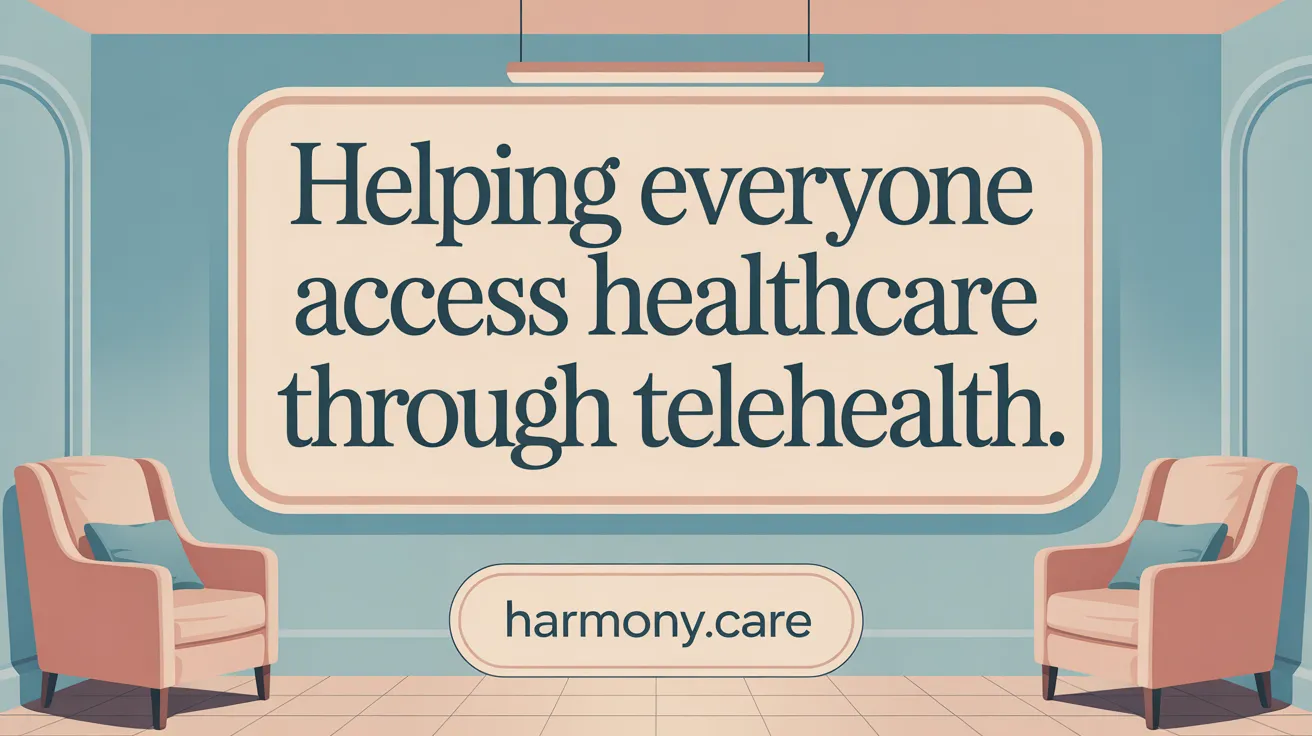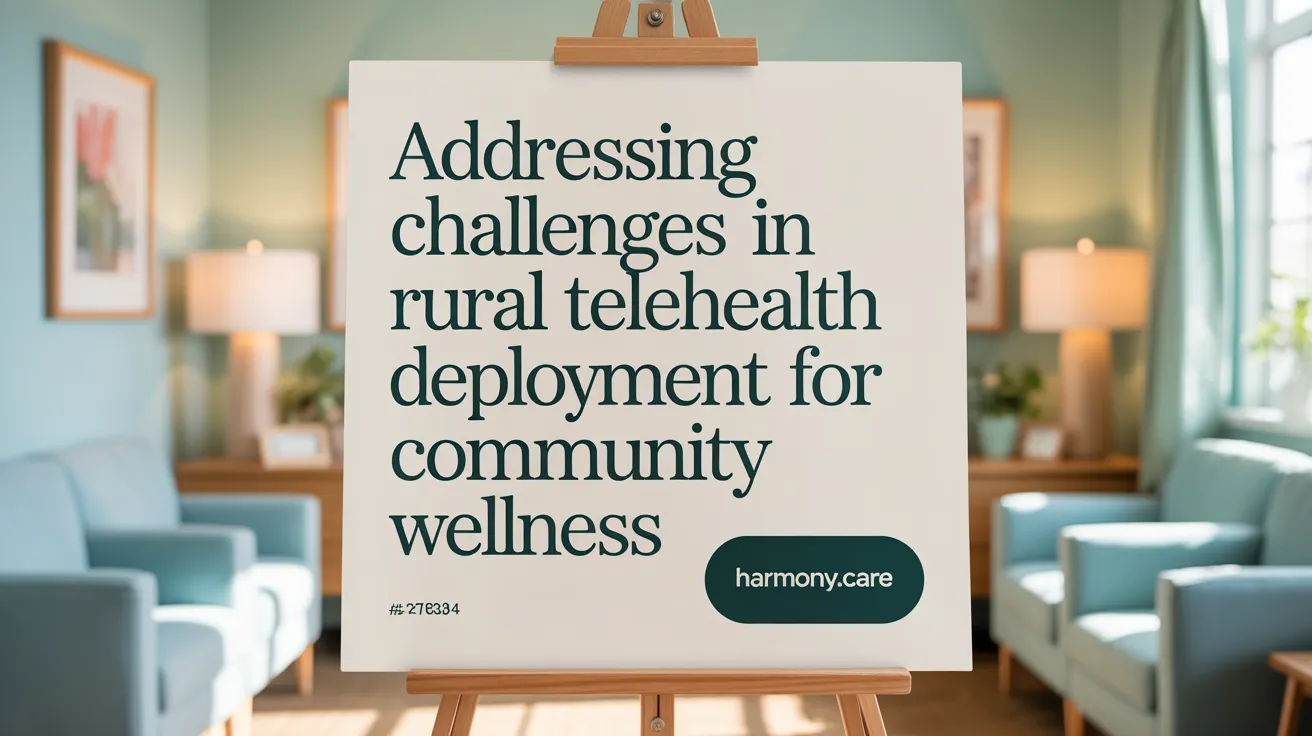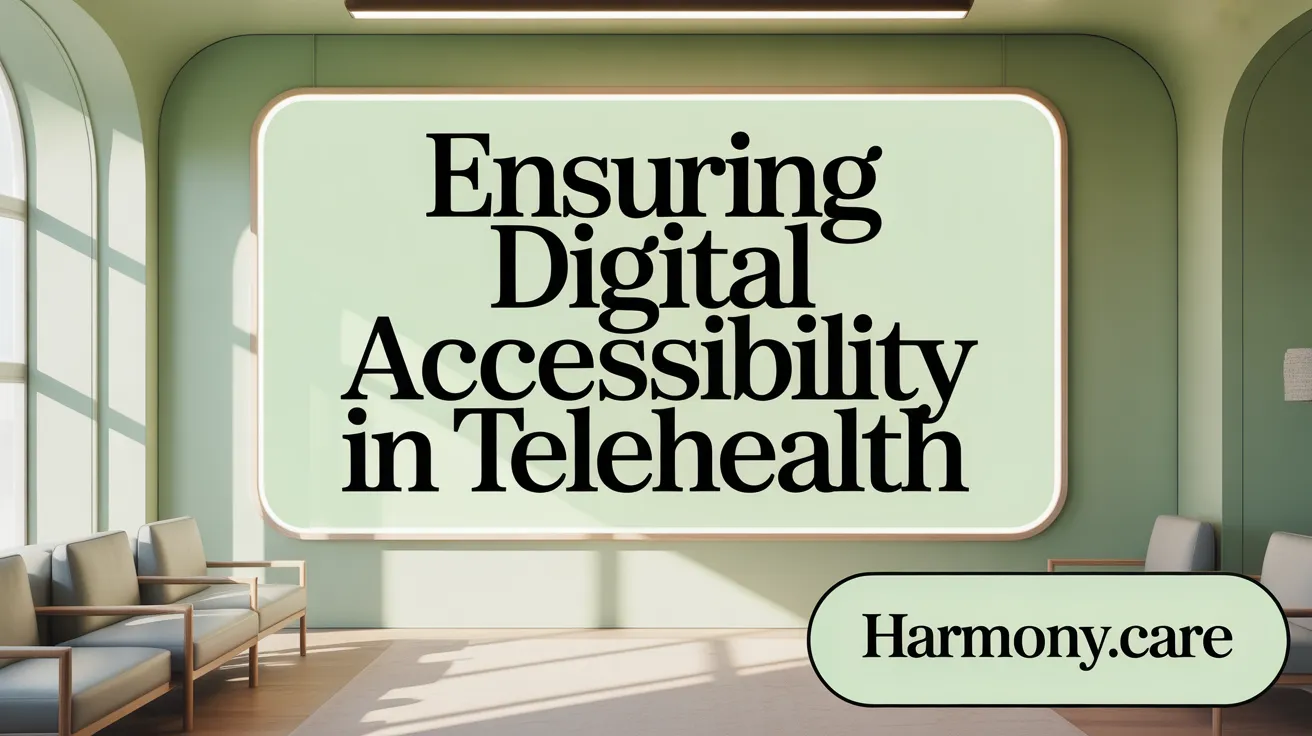The Revolution of Telehealth in Specialist Care Accessibility
Telehealth has emerged as a transformative force in healthcare delivery, revolutionizing access to specialist healthcare for home-based and remote patients. By leveraging digital technologies, telehealth overcomes traditional barriers of geography, mobility, and resource scarcity, making specialist care more accessible, especially during crises such as the COVID-19 pandemic. This article explores how telehealth bridges gaps in specialist access, highlights its benefits and challenges, examines policy and technological factors influencing its adoption, and delves into its role in enhancing health equity and supporting clinical research for home-bound individuals.
How Telehealth Enhances Specialist Access for Home-Based and Remote Patients

How does telehealth improve access to specialist healthcare for home-based and remote patients?
Telehealth plays a vital role in bridging the gap between patients and specialist healthcare providers, especially those living in rural or underserved areas. By leveraging digital technologies, telehealth allows patients to access specialist consultations and ongoing monitoring from the comfort of their homes without the need for long-distance travel.
One major advantage of telehealth is its ability to overcome geographical barriers. Patients in remote regions often face significant hurdles in reaching specialized medical services due to limited local facilities, transportation issues, or provider shortages. Telehealth addresses this by connecting patients with experts across distances through virtual visits, remote diagnostics, and digital health tools.
The COVID-19 pandemic accelerated the adoption of telehealth services worldwide. During this period, many regulatory restrictions were eased, allowing healthcare providers to deliver services directly to patient homes via secure video conferencing and remote monitoring devices. These policy changes, supported by organizations like the American Medical Association (AMA), expanded coverage and eliminated previous location-based limitations, ensuring that even the most isolated patients received timely specialist care.
Hybrid care models, which combine in-person visits with remote consultations and continuous monitoring, further improve healthcare access and continuity. Such models allow patients to schedule regular virtual check-ins with specialists, reducing the need for frequent travel and long wait times.
Looking ahead, policymakers are working to make these regulatory flexibilities permanent. Efforts focus on ensuring sustained access, improving infrastructure, and preserving reimbursement policies that support telehealth services. This ongoing support aims to maintain and expand the benefits of telehealth—making specialist healthcare more accessible for all, particularly those in remote or home-based settings.
Advantages and Challenges of Telehealth for Specialist Care

What are the main advantages and disadvantages of telehealth?
Telehealth has become an integral part of modern healthcare, especially in providing specialist care remotely. One of the foremost benefits is increased access; patients in rural, underserved, or geographically isolated areas can connect with specialists without the burden of travel. This expansion helps bridge healthcare gaps, offering timely diagnosis and treatment options for conditions like stroke, cancer, and chronic diseases.
Patient engagement also improves with telehealth, as virtual consultations are often more convenient, flexible, and less time-consuming. This convenience can lead to better adherence to treatment regimens and higher satisfaction rates. Cost savings are notable as well, reducing expenses related to transportation, inpatient stays, and administrative processes. For providers, telehealth enhances reach and productivity, enabling a broader patient base and more efficient care delivery.
However, challenges persist. Regulatory hurdles, such as licensure restrictions across states or regions, can limit the scope of remote consultations. Physical examination limitations pose significant constraints, especially for diagnosing complex or high-risk conditions that require in-person assessments. Technological barriers—including lack of reliable internet, digital literacy gaps, and the need for specialized equipment—can hinder effective implementation.
Despite these challenges, ongoing innovations in technology, along with supportive policies and infrastructure development, are expected to improve the efficacy and inclusivity of telehealth. Addressing the regulatory, technical, and clinical limitations will be crucial to unlocking its full potential in delivering equitable and comprehensive specialist care.
Strategies and Technologies Enabling Telehealth Accessibility

What strategies and mechanisms enable telehealth to enhance healthcare accessibility?
Telehealth has become a vital tool in expanding healthcare access across diverse populations, especially in remote and underserved areas. Several strategic approaches and technological innovations work together to make this possible.
One of the foundational elements is the deployment of various digital tools. These include high-quality video conferencing systems that allow real-time consultations between patients and providers, remote monitoring devices that track vital signs and chronic condition management, mobile health applications designed for patient engagement, and integrated electronic health records (EHRs) that facilitate seamless data sharing among healthcare teams.
Combining synchronous and asynchronous modalities further enhances flexibility. Synchronous methods, such as live video calls, enable immediate interaction, which is essential for diagnostic clarity and urgent care. Asynchronous options, like store-and-forward imaging or messages, support continuous monitoring and follow-up, particularly useful for managing chronic diseases and routine check-ins.
Emerging technologies significantly bolster telehealth efficiency and personalization. Artificial intelligence (AI) and machine learning enable predictive analytics, tailored treatment plans, and virtual diagnostics, improving decision-making. The Internet of Things (IoT), including smart wearable devices, facilitates continuous health monitoring, which is especially beneficial for elderly or chronically ill patients in rural settings. Additionally, innovations like virtual reality and natural language processing help streamline workflows, enhance communication, and create more engaging patient experiences.
Policy support plays a crucial role in telehealth's success. Laws ensuring reimbursement parity for telehealth services encourage provider participation. Licensure compacts across states facilitate cross-jurisdictional practice, broadening access. Investments in broadband infrastructure and policies expanding internet access are fundamental to overcoming connectivity barriers.
Community-driven initiatives also contribute significantly. Programs aimed at improving digital literacy—educating patients on using telehealth platforms effectively—help bridge socioeconomic gaps. Establishing local telehealth stations in community centers and offering device kits with instructions address infrastructural and educational barriers, ensuring that technology access does not hinder healthcare delivery.
In conclusion, a comprehensive approach blending advanced digital tools, flexible service modalities, emerging technologies, supportive policies, and community engagement drives telehealth toward greater accessibility, equity, and efficiency in healthcare delivery.
Telehealth’s Role in Advancing Health Equity and Reducing Disparities

How does telehealth contribute to increasing health equity and reducing disparities in healthcare?
Telehealth has emerged as a transformative solution for promoting health equity by expanding access to essential healthcare services, especially for underserved populations. Rural residents, minority groups, and individuals with mobility challenges often face significant barriers to in-person care, including long travel distances, high costs, and limited local provider availability. Telehealth addresses these issues by enabling remote consultations, diagnostics, and ongoing monitoring, which helps bridge the gap in healthcare access.
By providing virtual services, telehealth reduces the need for transportation, minimizing travel time and costs for patients in remote or isolated areas. It allows individuals to receive timely care, leading to better management of chronic illnesses and preventive health measures.
However, without targeted measures, existing disparities can widen—particularly due to digital divides. Many underserved communities lack reliable internet access, appropriate devices, or digital literacy skills, which can limit their ability to benefit from telehealth services.
Addressing these challenges requires strategic efforts such as expanding broadband infrastructure, offering digital literacy training, and developing culturally and linguistically appropriate platforms. For example, community-based programs that teach digital skills or provide device access can empower more individuals to utilize telehealth.
Policy initiatives also play a crucial role. Programs like broadband accessibility improvements, subsidies for digital devices, and regulations promoting equitable telehealth practices help ensure broader inclusion. Moreover, standards and guidelines for telehealth delivery can promote privacy, security, and quality, further fostering trust and usability among diverse populations.
When these measures are in place, telehealth can significantly reduce health disparities by enabling timely, convenient, and personalized care for historically marginalized groups. Thus, with deliberate policy support and infrastructure investment, telehealth can be a powerful tool to promote equitable healthcare coverage and improve health outcomes for all.
Key Challenges in Telehealth Implementation for Home and Rural Patients
 Implementing telehealth services in home and rural settings faces several significant barriers that impact access and effectiveness.
Implementing telehealth services in home and rural settings faces several significant barriers that impact access and effectiveness.
One primary obstacle is infrastructure limitations, particularly broadband and internet connectivity. Many rural communities lack reliable high-speed internet, which is vital for smooth video consultations and continuous data transfer. Without adequate connectivity, telehealth sessions can be disrupted or altogether impossible, compromising patient care.
Legal, regulatory, and reimbursement barriers also play a crucial role. Variations in state laws and licensing requirements create complexity for providers offering cross-jurisdictional services. Additionally, inconsistent reimbursement policies—where insurers do not always cover telehealth at parity with in-person visits—discourage providers from investing in telehealth infrastructure or services.
Patient acceptance and digital literacy are equally important. Older adults and socioeconomically disadvantaged groups often have limited familiarity with digital technologies, reducing their willingness or ability to participate confidently in telehealth. This digital divide can result in lower engagement and adherence to ongoing care.
Technological challenges include complex user interfaces, data security concerns, and the need for adequate provider training. Ensuring privacy and protecting patient information are critical, yet technological vulnerabilities can undermine trust.
Funding and resource constraints further hinder these efforts. The absence of dedicated financial support limits infrastructure upgrades, staff training, and ongoing maintenance needed for sustainable telehealth services.
Addressing these barriers requires coordinated strategies. Expanding broadband access through government and private sector initiatives, harmonizing legal and reimbursement policies, and promoting digital literacy among populations are essential steps. Additionally, investments in user-friendly technologies and robust cybersecurity measures can improve provider and patient confidence. Ultimately, overcoming these challenges is crucial for making telehealth a universally accessible tool to bridge healthcare gaps in underserved and remote communities.
Policy and Technology: Pillars Supporting Telehealth Expansion

How do policy and technological factors influence the effectiveness of telehealth in expanding access to specialist care?
Policy decisions such as reimbursement models, licensure regulations, and emergency regulatory adjustments play a crucial role in increasing telehealth's reach, especially for specialist services. When insurance coverage includes telehealth at parity with in-person visits, providers are more incentivized to offer virtual consultations. Cross-state licensure flexibility, which was temporarily expanded during the COVID-19 pandemic, allows healthcare professionals to serve patients across borders, significantly improving access in rural and underserved areas.
Technological advancements further enhance this access. The development of interoperable electronic health records (EHRs), remote monitoring devices, and easy-to-use platforms ensures reliable, high-quality telehealth interactions. These innovations facilitate seamless specialist consultations regardless of patient location.
Investments in infrastructure, like broadband expansion programs and funding initiatives, address disparities in technology availability. These investments are vital; without reliable internet access, especially in rural or low-income communities, the potential of telehealth remains limited.
During the pandemic, regulatory flexibility—such as relaxed licensing requirements and expanded coverage—demonstrated how swift policy adaptations can accelerate telehealth adoption. Nonetheless, challenges like digital literacy gaps, limited device access, and broadband disparities, especially for elderly or rural populations, continue to hinder optimal implementation.
To maximize telehealth's benefits, ongoing policy reforms and technological innovations must work in tandem. Addressing infrastructure deficits, simplifying user interfaces, and supporting community-based digital literacy programs are essential steps toward ensuring equitable access to specialist care through telehealth.
Nurse-Led Telehealth Interventions: Bridging Gaps and Enhancing Care

What role do nurse-led telehealth interventions play in bridging healthcare gaps?
Nurse-led telehealth initiatives are transforming healthcare delivery by extending services to underserved and remote populations. Nurses utilize digital tools such as video calls, phone consultations, and remote monitoring devices to provide continuous, tailored care outside traditional settings.
These interventions are vital for managing chronic diseases like diabetes and hypertension, where regular monitoring and patient engagement are essential. Nurses can track vital signs remotely, adjust treatment plans, and detect early signs of deterioration, which reduces the need for hospital visits and improves health outcomes.
Patient education is another core component, where nurses empower individuals with health literacy, medication adherence strategies, and lifestyle advice. This fosters greater self-care and improves compliance.
Furthermore, nurse-led telehealth enhances coordination among different healthcare providers, ensuring seamless, patient-centered care. This is particularly important in rural and marginalized communities, where healthcare disparities are prevalent.
However, to ensure these programs succeed, addressing barriers like digital literacy, protecting patient data, and navigating regulatory requirements are essential. Efforts to improve digital skills, robust security measures, and clear policies can maximize the benefits of nurse-driven virtual care.
Nurse-led telehealth holds promise for making healthcare more equitable, efficient, and accessible, ultimately bridging gaps that have long hindered vulnerable populations from receiving quality care.
Telehealth's Impact on Clinical Research and Remote Care for Homebound Patients

How does telehealth impact clinical research and remote care delivery for home-bound individuals?
Telehealth has transformed the way healthcare providers support home-bound patients, especially in clinical research and ongoing care. With advanced digital communication tools, telehealth enables the remote collection of health data and continuous patient monitoring, reducing the necessity for frequent travel to healthcare facilities.
This approach broadens participation in clinical trials, allowing individuals in isolated or underserved areas to engage without the burden of travel or mobility restrictions. For example, patients with chronic conditions, disabilities, or those living in rural communities can actively participate in research studies, increasing diversity and inclusivity.
Patient engagement and satisfaction tend to improve when care is accessible and convenient. Telehealth platforms facilitate real-time virtual consultations, enabling prompt adjustments to treatment plans. In managing conditions like diabetes, mental health disorders, or neurological diseases, telehealth has shown to enhance health outcomes by providing consistent support and monitoring.
To maximize efficiency, hybrid models combine in-person visits with remote check-ins, optimizing resource use while maintaining high-quality care. This blended approach is especially beneficial for follow-up care, medication management, and patient education.
For older adults or those with mobility challenges, tailored, user-friendly technologies and caregiver assistance can overcome barriers related to digital literacy and physical impairments. This inclusion enhances their participation in both research and treatment plans.
Despite its many benefits, challenges such as technological infrastructure, data privacy, and the need for ongoing training must be addressed. Overcoming these hurdles is essential to fully leverage telehealth’s potential for supporting homebound populations in research and clinical care.
Nursing Informatics: Integrating Care and Technology in Telehealth

How does nursing informatics bridge the gap between patient care and technology within telehealth?
Nursing informatics serves as a vital link between patient care and advanced technology in the context of telehealth. It combines nursing science with computer and information sciences, creating a foundation for effective virtual healthcare delivery.
Informatics nurses facilitate seamless communication among healthcare providers and patients by managing electronic health records (EHRs) and employing data analytics tools. This ensures that real-time, accurate patient information is accessible remotely, which is crucial for timely decision-making.
Through proficiency with telehealth platforms, remote monitoring devices, and digital communication tools, nursing informatics supports clinicians in providing consistent, high-quality care. It also plays an essential role in safeguarding patient safety and maintaining data privacy.
Furthermore, nurse informaticians advocate for the integration of innovative technologies that improve access to care, especially for populations in rural or underserved areas. By aligning technological advancements with clinical needs, nursing informatics enhances care coordination, reduces errors, and improves patient outcomes.
In essence, nursing informatics transforms telehealth from simply a virtual consultation platform into a comprehensive, patient-centered system that supports efficient, safe, and equitable healthcare delivery.
Specialized Telehealth Solutions: Cancer and Maternal Health Care

What telehealth solutions help overcome access issues in specialized fields such as cancer and maternal health care?
Telehealth has become a vital resource in addressing barriers to specialized healthcare, especially in fields like oncology and maternal health. Virtual consultations allow patients to connect with cancer specialists and obstetricians without the need for long-distance travel, which is especially beneficial in rural and underserved communities.
Remote monitoring devices enable continuous tracking of health status, such as managing pregnancy complications or monitoring cancer symptoms. Digital platforms like secure video conferencing facilitate regular follow-up visits and symptom management, ensuring timely interventions.
Programs such as Project ECHO® (Extension for Community Healthcare Outcomes) have expanded specialist access by enabling primary care providers in remote areas to consult with expert teams through tele-mentoring and e-consults. These initiatives extend expert knowledge and improve local provider capacity, bridging significant gaps in healthcare expertise.
In addition, telehealth technologies support ongoing management of chronic conditions linked to cancer and pregnancy, reducing the need for frequent hospital visits. For example, remote symptom tracking tools can alert providers immediately if a patient’s condition deteriorates.
Access to clinical trials also improves through telehealth, enabling patients from rural locations to participate in cutting-edge research without extensive travel. This broadens the availability of innovative treatments beyond urban centers.
Addressing transportation barriers, shortages of local specialists, and socio-economic challenges, telehealth promotes more equitable health outcomes. Nonetheless, overcoming digital divides remains essential. Reliable internet access, digital literacy, and supportive policies are critical to fully leveraging these technologies.
In summary, telehealth offers comprehensive solutions—virtual consultations, remote monitoring, provider collaboration, and clinical trial access—that markedly improve care delivery in cancer and maternal health, especially where traditional services are limited. Efforts to expand infrastructure and policy support are necessary to maximize these benefits.
Bridging the Digital Divide: Critical Steps for Effective Telehealth

Access to devices and broadband
One of the main barriers to telehealth adoption is the lack of devices and reliable internet connections. Many individuals in rural or underserved areas do not own smartphones, computers, or have stable broadband, limiting their ability to participate in virtual healthcare. To address this, community programs can distribute ‘to-go kits’ equipped with devices and instructions, or establish telehealth stations in public spaces like libraries and community centers. Enhancing broadband infrastructure through government funding and partnerships is also crucial to ensure high-speed internet is accessible for all.
Addressing digital literacy and user understanding
Even with access to the necessary devices and internet, many patients face challenges in understanding how to use telehealth platforms. Educational initiatives like classes, demonstrations, and step-by-step guides can empower users to navigate virtual consultations confidently. Providing ongoing technical support helps bridge the digital literacy gap, ensuring that populations such as the elderly and those new to technology are not left behind.
Community and government initiatives
Various programs aim to expand telehealth access, especially in rural regions. Initiatives like the FCC’s Healthcare Connect Fund, the USDA’s Community Connect Program, and national policies like the Affordable Connectivity Program have been instrumental. These efforts focus on improving infrastructure, subsidizing costs, and creating regional networks that facilitate easier access to telehealth services.
Innovative solutions like mobile units and telehealth stations
To reach isolated communities, some regions deploy mobile health units equipped with telemedicine technology, bringing healthcare directly to patients. Similarly, establishing dedicated telehealth stations in community centers or clinics offers a safe, accessible environment for virtual consultations. Such innovations help mitigate infrastructural and technological gaps, ensuring healthcare is available regardless of location.
Ensuring inclusive and equitable telehealth adoption
Achieving equitable access requires targeted strategies to include marginalized populations. This includes offering services in multiple languages, designing user-friendly platforms, and considering cultural preferences. Policies that promote funding for underserved communities and support training initiatives are essential for creating an inclusive telehealth environment. As telemedicine continues to evolve, a focus on lowering barriers will be vital for ensuring every patient benefits from digital healthcare advances.
Telehealth as a Catalyst for Equitable Specialist Access
Telehealth stands as a powerful catalyst transforming specialist healthcare access for home-based and remote patients by breaking down geographical, socioeconomic, and infrastructural barriers. Its strategic integration of advanced digital technologies, supportive policies, and community-driven initiatives fosters enhanced health equity, continuity of care, and patient empowerment. Despite facing obstacles such as technological disparities, regulatory complexities, and resource limitations, ongoing innovations and dedicated efforts to bridge the digital divide ensure telehealth's promising future. By expanding its reach and refining its implementation—particularly for vulnerable populations and specialized fields like cancer and maternal care—telehealth holds the potential to revolutionize healthcare delivery, improve outcomes, and create a more inclusive, accessible system for all patients, regardless of location.
References
- How Telemedicine Is Improving Patient Outcomes and Expanding ...
- A Comprehensive Review on Exploring the Impact of Telemedicine ...
- How Telemedicine Is Bridging Gaps in Healthcare Access
- Telehealth for Health Equity: Bridging Gaps in Healthcare - URAC
- Leveraging telehealth to serve underrepresented populations
- Telehealth Bridges the Gap Between Technology and Patient Care ...
- Telehealth and Health Information Technology in Rural Healthcare
- Minimizing Telehealth Technology Barriers in Rural and ... - AAP
